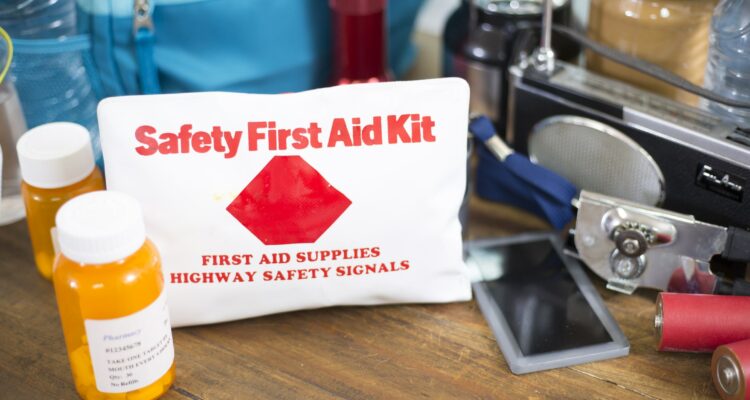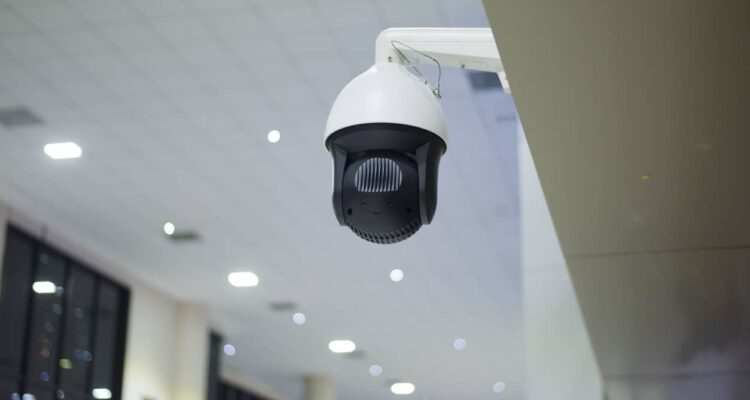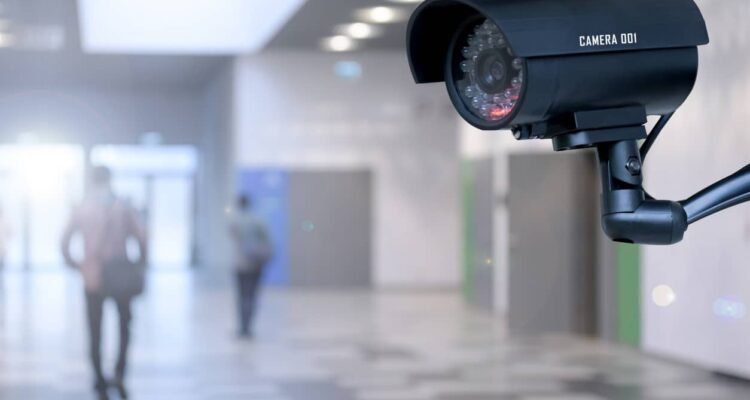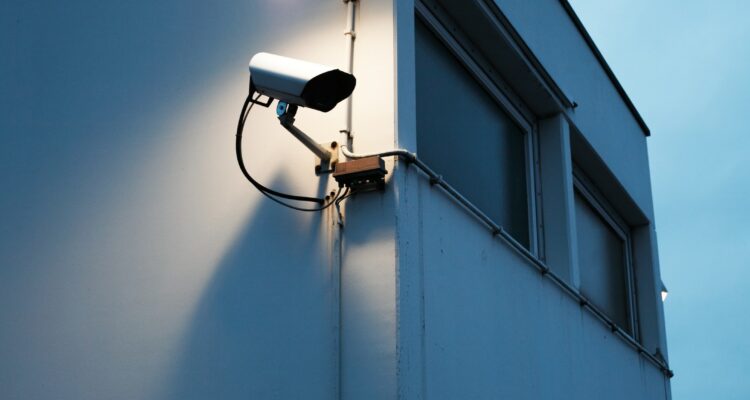When considering a security system for your business or an upgrade to an existing system,…

How to Create an Emergency Response Kit for Your Workplace
As an employer, your top priority is keeping your employees and visitors safe. While you may have precautionary measures in place to prevent accidents or emergencies from happening, it’s crucial to be prepared in the event a crisis does occur. Whether it’s a natural disaster, a power outage, or an unforeseen incident, having emergency response kits for the workplace can make all the difference.
An emergency response kit is a collection of essential items and supplies to help you and your employees respond to emergencies quickly and effectively. Office emergency kits not only ensure the safety of your employees but also help maintain business continuity during challenging times. In this guide, we’ll delve deep into the essentials of crafting an emergency preparedness kit tailored for your work environment.
Continue reading below to learn more about what should be included in your emergency response kit and how U.S. Protective Services can help ensure your workplace is ready to respond effectively.
Key Takeaways
- Emergency response kits are crucial for workplace safety
- Creating a customized emergency response kit is essential to adequately prepare for emergencies
- Assessing potential risks and identifying necessary supplies are the first steps in creating an emergency response kit
- Proper organization, storage, and maintenance of your kit are crucial for effectiveness
- Regular training of employees and reviewing/updating your emergency plan are vital in emergency preparedness
Assessing Potential Risks in the Workplace
Before creating your emergency response kit, it’s crucial to assess potential risks and hazards specific to your workplace. By identifying potential hazards, you can determine the necessary supplies for your emergency kit. Conducting a comprehensive workplace safety assessment is the first step in emergency preparedness.
Identify Workplace Hazards
Recognizing potential hazards in your workspace is critical for emergency preparedness. Conducting a thorough safety hazard assessment will help you identify workplace risks such as electrical hazards, chemical spills, or natural disasters like floods or earthquakes. Once you have evaluated your workplace’s potential risks, you can prepare and stock your emergency response kit accordingly.
Determine Necessary Supplies
Based on the hazards you have identified, it’s essential to determine the necessary supplies to include in your emergency response kit. Some common emergency preparedness supplies include first aid supplies, emergency communication devices, flashlights, batteries, and survival food and water. The contents of your kit will depend on the nature of your workplace’s potential hazards and the size of your organization.
Create an Emergency Preparedness Plan
Creating an emergency preparedness plan is an essential part of emergency response. Your organization’s emergency plan should detail emergency procedures, evacuation routes, and communication plans. Once your emergency response kit is stocked, integrate it into your workplace emergency procedures. Ensure all employees are aware of emergency response protocols and are trained to use the emergency kit.
Choosing the Right Supplies for Your Emergency Response Kit
Now that you have assessed potential risks in your workplace, it’s time to select the right emergency supplies for your kit. Here are some essential items to include:
- Water bottles or purification tablets to ensure potable water supply
- Non-perishable food items such as energy bars and canned goods
- A well-equipped first-aid kit, including bandages, gauze, antiseptic wipes, and tweezers
- A solar-powered or battery-powered radio for staying up-to-date with emergency broadcasts
- A flashlight with extra batteries or a hand-crank option
- Whistles or other attention-grabbing devices to signal for help
- Dust masks for protection from airborne pollutants
- Emergency blankets and warm clothing for extreme temperatures
- Cell phone chargers and power banks
- Important documents and identification information, such as driver’s licenses and passports, in a waterproof container
Be sure to customize your kit based on the unique needs of your workplace. For example, if your workplace is located in a flood-prone area, you may want to include sandbags and waterproof containers to protect your equipment and supplies.
Additionally, consider the number of employees in your workplace and ensure there are enough supplies to sustain them in the event of an emergency. Make sure to update your kit regularly and replace any expired items.
Workplace First Aid Kit
A workplace first aid kit is an essential component of your emergency response kit. Make sure it includes bandages, gauze, antiseptic wipes, tweezers, scissors, and gloves. It’s also a good idea to include any medication employees may need, such as EpiPens or inhalers.
Emergency Communication Devices
During an emergency, communication is critical. Ensure your emergency response kit includes communication devices such as two-way radios or cell phones and a list of emergency contact numbers. Consider including a whistle or air horn for signaling for help in case of power outages or other forms of communication failure.
Organizing and Storing Your Emergency Response Kit
Now that you have gathered the necessary supplies for your emergency response kit, organizing and storing them correctly is essential. Proper storage and organization of your kit can make all the difference during a crisis. Here are some tips to help you get started:
Designate a Storage Area
Choose a location that is easily accessible to everyone but still out of the way of day-to-day operations. Ensure everyone knows where the kit is located and designate someone responsible for its upkeep.
Sort Your Supplies
Sort your supplies into categories and label them accordingly. This will make it easier to quickly find the items you need during an emergency. Consider using clear plastic containers to help keep everything organized and visible.
Create a Checklist
Keep a checklist of all the items in your emergency response kit handy. This will make identifying missing or expired items easier during regular inspections and maintenance.
Integrate Your Kit into Workplace Emergency Procedures
Train your employees on the proper use and maintenance of your emergency response kit. Ensure it’s included in your workplace emergency procedures and that everyone knows what to do in an emergency.
By following these tips and integrating your kit into your workplace emergency procedures, you can ensure your emergency response kit is ready to go when needed.
Conducting Regular Kit Maintenance and Inspections
Maintaining and inspecting your emergency response kit is vital to ensuring it is ready for use in an emergency. Regular checks can identify any expired or damaged supplies that may not work correctly and should be replaced. Here are some steps that can help you keep your kit up to date:
- Assign someone to be in charge of kit maintenance and inspections. This person should be responsible for conducting regular checks and ensuring that any issues are addressed promptly.
- Set a regular schedule for kit inspections. Inspecting your emergency response kit regularly is essential to ensure that all items are still working and up to date. Depending on your workplace’s specific needs, inspections may be weekly, monthly, or quarterly.
- Check for expired items. Go through each item in your emergency response kit and check the expiration dates of any medications or perishable items, such as batteries or food. Replace any expired items immediately.
- Ensure that all items are in good working condition. Verify that all equipment, such as flashlights, communication devices, and first aid items, is in good working order.
- Restock any used supplies. After an emergency, restock any items that were used promptly. This can help ensure your kit is always ready to go when needed.
In addition to regular kit maintenance, it’s also essential to conduct workplace safety inspections. These inspections can help identify potential hazards and ensure the workplace is safe for employees. Here are some tips for conducting workplace safety inspections:
- Assign someone to be in charge of safety inspections. This person should be responsible for conducting regular checks and addressing any identified issues.
- Set a regular schedule for inspections. Depending on your workplace’s specific needs, inspections may be daily, weekly, or monthly.
- Check for potential hazards. Look for potential hazards, such as spills, damaged equipment, or blocked emergency exits. Address any hazards that are identified promptly.
- Ensure that safety equipment is in good working condition. Verify that all safety equipment, such as fire extinguishers, smoke detectors, and emergency lighting, is in good working order.
- Document any findings. Document any issues identified during the inspection and track the progress of any corrective actions.
Following these steps ensures that your emergency response kit and workplace are always prepared for emergencies. Regular maintenance and inspections can help prevent accidents and ensure your workplace is safe.
Unlock the Future of Workplace Safety with U.S. Protective Services
Emergencies can happen at any time, so being prepared is crucial. By following the steps outlined in this article, you can take proactive measures to promote workplace safety and ensure that your organization is ready to handle any emergency.
Every business has unique challenges, but safety shouldn’t be one of them. With U.S. Protective Services by your side, you can navigate these challenges with confidence.
As Cleveland’s premier provider of commercial security systems, U.S. Protective Services is committed to being your reliable partner in workplace safety. We understand that every business is unique, which is why we personalize our services to fit your specific needs, ensuring you get the most out of your security investment. When you choose U.S. Protective Services, you’re choosing a team that’s dedicated, knowledgeable, and always on the lookout for the best ways to protect your business. Don’t leave the safety of your business to chance. Contact U.S. Protective Services today to learn more about our commercial security system options and receive a free, no-obligation quote for your business.



